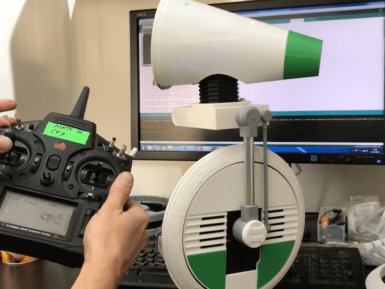
Arduino MKR IMU Shield
Need to integrate inertial measurements within your MKR based project? Plug in the Arduino MKR IMU shield and get the three-dimensional acceleration, yaw rate and magnetic field strength data in 3 perpendicular axes.
Overview
The MKR IMU Shield is based on the BNO055 absolute orientation sensor from Bosch Sensortec GmbH which integrates a triaxial 14-bit accelerometer, a triaxial 16-bit gyroscope with a range of ±2000 degrees per second and a triaxial geomagnetic sensor with a 32-bit microcontroller running the BSX3.0 FusionLib software. The sensor features three-dimensional acceleration, yaw rate and magnetic field strength data each in 3 perpendicular axes.
Tech specs
|
Sensor |
BNO055 from Bosch (product page) |
|
Operating voltage |
3.3V |
|
Extension interface |
4 pin header connector |
|
Communication protocol |
I2C |
|
Compatibility |
MKR Family |
Conformities
Resources for Safety and Products
Manufacturer Information
The production information includes the address and related details of the product manufacturer.
Arduino S.r.l.
Via Andrea Appiani, 25
Monza, MB, IT, 20900
https://www.arduino.cc/
Responsible Person in the EU
An EU-based economic operator who ensures the product's compliance with the required regulations.
Arduino S.r.l.
Via Andrea Appiani, 25
Monza, MB, IT, 20900
Phone: +39 0113157477
Email: support@arduino.cc
Documentation
OSH: Schematics
The Arduino MKR IMU Sheld is open-source hardware! You can build your own board using the following files:
EAGLE FILES IN .ZIP SCHEMATICS IN .PDFLearn more
Get Inspired
Connect Arduino to a web browser over Bluetooth and see a 3D model and graph moving around - magic!

While it’s yet to make its premiere, Matt Denton has already built the D-O droid from Star Wars: The Rise of Skywalker using a MKR WiFi 1010 for control, along with a MKR IMU Shield and a MKR Motor Carrier. The droid scoots around on what appears to be one large wheel, which conceals the Arduino boards as well as other electronics, batteries, and mechanical components. Denton’s wheel design is a bit more complicated mechanically than it first appears, as its split into a center section, with thin drive wheels on the side that enable differential steering. On top, a cone-shaped head provides sounds and movement, giving the little RC D-O a ton of personality. The droid isn’t quite finished as of the video below, but given how well it works there, the end product should be amazing!








